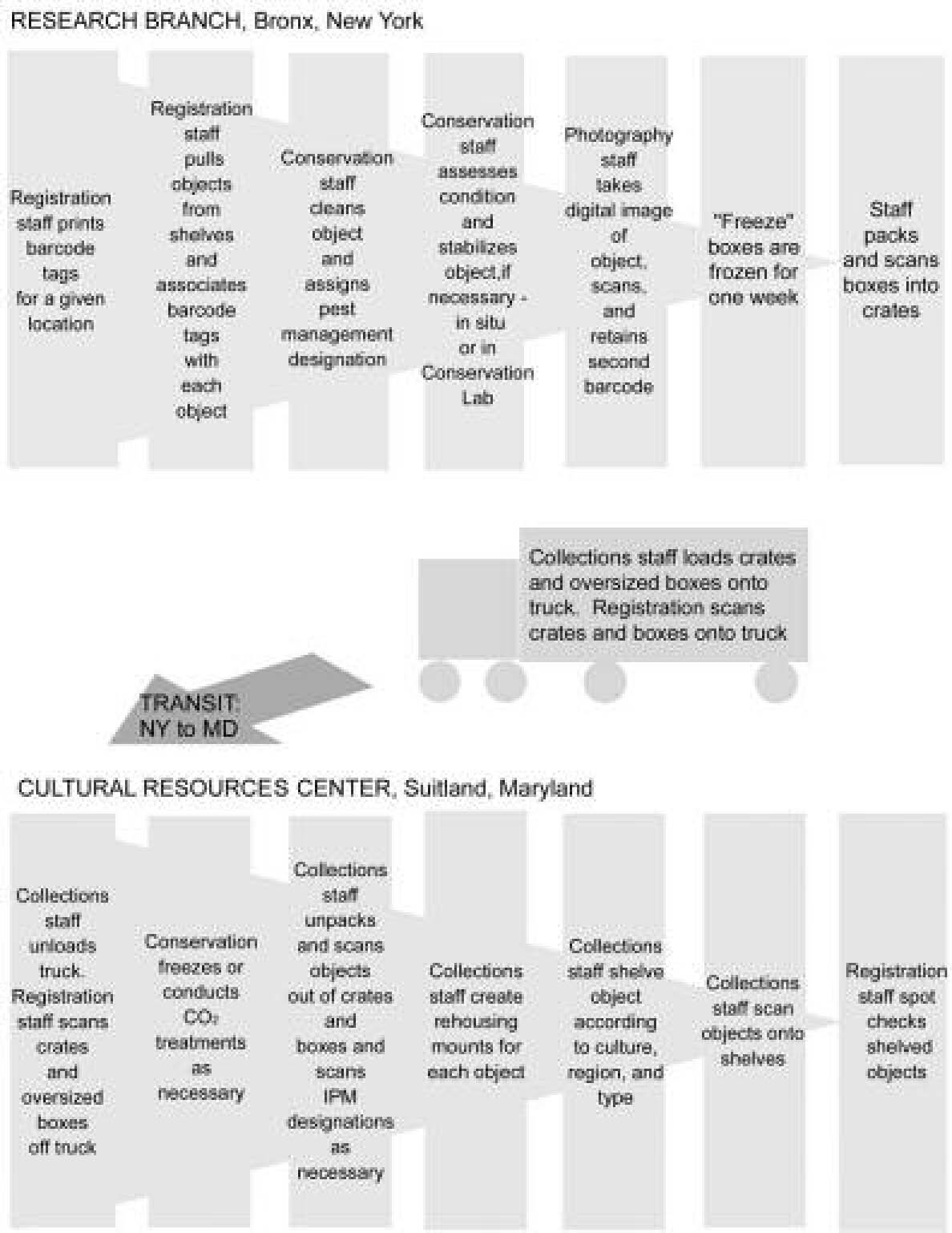INTEGRATING PREVENTIVE CONSERVATION INTO A COLLECTIONS MOVE AND REHOUSING PROJECT AT THE NATIONAL MUSEUM OF THE AMERICAN INDIANEMILY KAPLAN, LESLIE WILLIAMSON, RACHAEL PERKINS ARENSTEIN, ANGELA YVARRA MCGREW, & MARK FEITL
3 OVERVIEW OF THE NATIONAL MUSEUM OF THE AMERICAN INDIAN MOVE PROCESSES3.1 PROCEDUREThe NMAI Move worked on an assembly line system that created a linear flow of objects through the several departments, culminating in the successful rehousing at the new facility (fig. 1). The handson work flow proceeded in this order: at the Research Branch, Registration staff pulled objects from old storage locations, generated and associated a unique printed barcode tag with each object, and sorted them according to cultural group (ethnology collections) or provenance (archaeology collections). Conservation staff then inspected and vacuum cleaned the objects, stabilized them as necessary, and assigned a pest management treatment. Next, Photography staff took a high quality digital photograph of each object. Collections Management staff packed each object into boxes and then the objects, in boxes, underwent pest management treatment as required. The boxes were then crated and transported by truck to the Cultural Resources Center. There, Collections staff unpacked and sorted the objects, Conservation staff inspected objects and oversaw any additional pest management not carried out at the Research Branch, and Collections staff rehoused and shelved each object. Throughout the process Registration staff managed data from barcode scanning. All of these tasks were necessary and integral to the safety of the objects, and some of the tasks provided crucial information for the museum as well. However, the sheer number of steps and functions involved in the workflow resulted in an enormous amount of handling. In order to make this system safe and efficient, preventive conservation procedures were instituted and staff were crosstrained and flexible so that they could shift between tasks to alleviate bottlenecks formed when more difficult objects were being moved. Flexibility was especially valuable when working with the ethnographic collection, which was relatively varied in material composition and condition compared to the archeological collection. 3.2 STAFFINGStaff within the Move departments, Conservation, Registration, Collections Management, Photography, and Administration,
Administration/Management
Conservation
Registration
Collections Management
Photography
|
